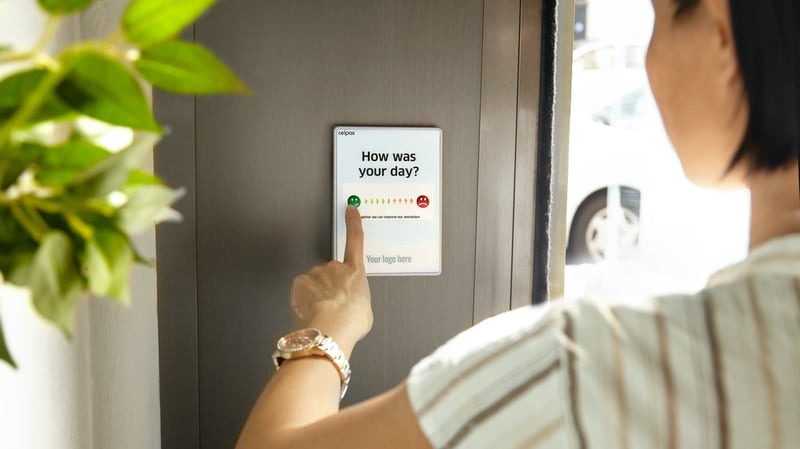5 Actionable Continuous Learning Tips from the Experts
TABLE OF CONTENTS
The benefits of continuous learning are numerous.
Firstly it reduces churn - companies rated highly on training experienced 53% lower churn. And employee turnover is costly - when someone leaves you are hit with the triple cost of recruiting, interviewing and training someone new. Investing in upskilling existing talent is 6x less expensive.
Churn aside, another result of continually upskilling your workforce is improved employee productivity, innovation and company profitability. Companies who invest in continuous learning experience 37% higher productivity, 17% higher profitability and are 92% more likely to innovate.
This is because when you put knowledge in the palm of your peoples’ hands they are motivated and empowered to perform at their very best, and in a better position to adapt to rapid market change, like technological advancement.
The provision of continuous learning will also increasingly become a key determinant of your company’s success in the future, as demographics of the workforce change. It’s predicted that by 2025 that 75% of the workforce will be millennial and close to 90% of millennials value “career growth and development opportunities” highly.

But not all continuous learning is created equal. What can you do to make sure your continuous learning is a cut above the rest? Read on for top tips from the experts...
1. Make use of peer-to-peer
“There is a much-underused resource companies can leverage to complete their transition toward a continuous learning culture: peer coaching. If implemented correctly, a continuous learning culture based on peer coaching can drive performance, boost employee engagement and develop future leaders.” - Steffen Maier, co-founder of Impraise
One of the most powerful continuous learning tools is inexpensive and right under your nose - it’s your existing employees. Yet according to this McKinsey survey, less than 50% of organizations are utilizing peer-to-peer in an official capacity.
This is a wasted opportunity. Your employees are already engaging in peer-to-peer learning - when in doubt, 55% of employees turn to their colleagues first. How do you capitalise on this existing momentum and formalise peer-to-peer?

In our new increasingly remote world, peer-to-peer learning could be as simple as having high performers share their expertise with colleagues via video. Doing this would incentivise the future high performance of the employee featured, and is more impactful on learners than if the same knowledge were relayed by senior leadership.
This approach is one advocated for and practiced by tech leaders like Google. At Google, 55% of formal learning that takes place is delivered by employees to other employees. Google’s Head of People Operations, Karen May, has said she favours peer-to-peer learning because it turns learning into an interactive, team-driven experience rather than something employees feel ordered to do by HR in an email.
At eduMe we’ve implemented remote, peer-to-peer learning using our platform - each employee has been tasked with creating peer-upskilling lessons on a topic related to their field.
2. Make it just-in-time, and to the point
“We’re all just too caught up in the inexorable flow of work. For learning to really happen, it must fit around and align itself to working days and working lives. Rather than thinking of corporate learning as a destination, it’s now becoming something that comes to us.” - Josh Bersin, HR & Learning Analyst and founder of Bersin Academy and Marc-Zao Sanders , Founder and CEO of Filtered.com
57% of employees now expect to learn in a ‘just-in-time’ way. This expectation for how learning occurs (on-demand, at their point of need) is a by-product of the proliferation of three things - the internet, smartphones and lack of time in the working day.

Since the evolution of the internet, smartphones, and the subsequent overlap of the two - i.e. surfing the internet, via a smartphone device - we have grown used to accessing information differently. Now, when someone has a job-related question, they open up a web browser, type it in, read around for a few minutes. They then put this newly gained information into practice immediately.
Not only has the internet pushed us to favour learning “in the flow of work”, as Bersin terms it, rather than carving out hours to learn around our work, but it’s pushed us to prefer learning in shorter bursts.
Wanting our learning to be concise is a combination of our shortened attention spans (down to 8 seconds from 12), and the fact the average employee has just 1% (24 minutes) of a typical work week to designate to learning.
So though you may be pouring time and resources into creating learning material, your investment is in vain if you're communicating it to employees via a clunky, dated medium like an LMS, at the wrong time and in a time-consuming way. In order for the contents of the learning to land in the first place, you need to reach people where they are (smartphones), when they need it (in the flow of work), and in a brief format (microlearning).
-
Related: What is Microlearning?
You may be thinking ‘it’s impossible to predict what each individual might need in a given moment’. And it’s true - just-in-time learning needs can’t be accommodated in every instance. But a three-step process you can follow to identify opportunities for on-demand learning, and implement it to a degree, is:
-
Anticipate the need. E.g. is there something that new hires tend to ask you frequently?
-
Ask yourself when learners might experience the need. Is it before their first day, or on their first day?
-
Create content that succinctly and accessibly answers it. If a popular question is ‘is there free coffee?’, schedule a push notification for them on the morning of their first day that provides the answer, then invites them to click on it for more information (e.g. a short video on how the coffee machine works).
3. Make it feedback-oriented
“Microsoft Founder Bill Gates reminds us that we are all works in progress: “We all need people who will give us feedback. That’s how we improve.” This also applies to our businesses. Whether this feedback comes from customers, partners or employees, we can use it to make our companies better and our teams more engaged and productive.” - Michael Kurkland, CEO of Branded Group
How is it that you know what individuals’ knowledge gaps are in the first place?
An easy way to identify them is to simply ask, rather than make learning an assumption-based stab in the dark at what people might need to know. Plus, when you empower your people with a voice, they are 4.6x more likely to perform at their very best. For this reason, surveys are a vital pillar of continuous learning and key to implementing it successfully.

At the moment however, companies are failing their people by only reaching out to them in annual employee engagement surveys.
“You wouldn’t check in with your friends and family once every year to see how they’re getting on, so why is it commonplace for employees to be given the chance to voice their opinions so infrequently?” - Johnny Warstrom, CEO of Mentimeter
Annual surveying is inadequate for many reasons. They attempt to make up for their infrequency in their length, and resultantly suffer low completion rates - just 30% of employees respond at all. Meaningful learning initiatives can’t be derived from the feedback of such a small proportion of people.
They also equal (even if you only hear from 30% of people) an inundation of data, which takes months for HR to digest, analyse and publicise the results of. This lag between employee survey completion and company action means that by the time areas of weakness are identified, the opportunity to resolve them has passed. As a result, this type of surveying becomes little more than a redundant formality, rather than a genuine stream through which to gather insight and take action.
In fact, though named ‘employee engagement surveys’, they ironically reduce rather than improve employee engagement. 38% don’t know if their employers take action following a survey. And organizations who survey then do nothing in response, have lower employee engagement than before the survey.
Ultimately, surveying people in this infrequent, untimely way doesn’t allow you to gather an in-the-moment snapshot of employee sentiment or knowledge gaps, therefore cannot inform effective learning.
So, much like the strategy of learning in the flow of work, you should get into the practice of surveying in the flow of learning.
How do you do this? With pulse surveys. These are typically anonymous, single-question surveys sent out at frequent intervals. Their brevity means they have a 90-100% response rate. This high response rate is likely also to do with their timing as they are often sent as an immediate follow-up to learning. And the fact that pulse surveys operate on the principle of surveying in the flow of learning means insights can be acted on quickly by management.
4. Make an effort to measure
“We can only manage what we measure” - Vipula Ghandi, Managing Partner, Gallup
Analysing performance metrics is a key stage in effectively implementing continuous learning. Even if your learning is just-in-time, and informed by pulse survey results, if you aren’t assessing the impact of learning by looking at performance metrics, you can’t drive organizational improvement.
Though 90% of learning and development leaders believe high quality data as important to improving learning delivery in their organizations, just 55% say they only ‘sometimes’ use data to inform future learning. More than this, they report 38% of their investment in learning in the past year was ‘indiscriminate’, i.e. not planned in response to data.

Such a scattergun approach to continuous learning isn’t effective - if you don’t know who is struggling and on what, you won’t know what the knowledge gaps that need bridging are, and they’ll hit a wall in their learning journey.
Learning can also only be automated if performance is being monitored. Automation is contingent on quality metrics and triggers (usually low performance) - for instance, a learner slipping below a set minimum threshold being automatically sent a refresher course.
5. Make sure soft skills aren’t overlooked
“When we talk about learning, the emphasis is often on ‘hard’ skills, such as coding, analytics, and data science”, Harvard Business School Professor Amy Edmonson and Learning Engineer Bror Saxberg say. “While these skills will be critical, they are only part of the story”.

Traditionally, learning in organisations hasn’t just been treated as a finite, one-off, one-way journey, that is not delivered at people’s point of need (therefore ends up being less impactful, as is less retainable). But it’s also been unequally balanced around the development of so-called ‘hard skills’.
When an employee is sent on an away day to be upskilled, managers want to see something measurable in return for the cost and time input. Not only are in-person workshops ineffective and costly, but the focus on employees coming away from time designated to learning with a “provable” hard skill is unproductive.
Why? It will be soft skills that reign supreme in the future of work, and these skills are near impossible to measure.

When “AI-enabled, information-rich tools” become “ubiquitous” across organisations, it’s your people that become “the differentiator” between failure and success. These changing dynamics “increase the importance of such ‘soft’ attributes as collaboration, empathy, and meaning making”, Edmonson and Saxberg go on to say.
Seeing as the degree to which individuals’ soft skills are developed will determine whether your company sinks or swims, any successful continuous learning strategy will incorporate both.
The takeaway...
Continuous learning is essential for achieving Workforce Success - that is, the organisational success unlocked by ensuring each and every individual is empowered to perform at their very best.
But what distinguishes highly impactful continuous learning from the rest is how personalized an individual’s learning journey is.
And to deliver a continuous learning experience that is intelligent, agile and future-proof, you should:
-
Leverage the power of peer-to-peer learning
-
Provide knowledge on-demand, at peoples’ point of need
-
Check in with learners, and create feedback-informed content
-
Measure the results of learning
-
Invest in developing developing soft skills
Are you looking to continually upskill employees, freelancers or clients, effectively and no matter where they are? We can help.
Join 10,000+ frontline leaders
Subscribe to ‘Training the Frontline’ and get weekly insights sent straight to your inbox.

